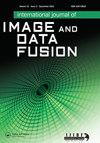Mapping of mineral resources and lithological units: a review of remote sensing techniques
IF 1.8
Q3 REMOTE SENSING
International Journal of Image and Data Fusion
Pub Date : 2019-04-03
DOI:10.1080/19479832.2019.1589585
引用次数: 57
Abstract
ABSTRACT The remote sensing (RS) techniques have become a guiding and promising tool for mineral exploration and mapping of lithological units. The RS for mineral exploration begins with Landsat multispectral data in which the iron oxide and clay minerals associated with hydrothermal alteration zones were delineated using techniques like BR and PCA. Later, the advanced image processing techniques like spectral angle mapping, spectral feature fitting, Crosta technique and MNF transformation were successfully implemented to delineate clay, sulphate and iron oxide minerals using the shortwave infrared bands of Advanced Spaceborne Thermal Emission and Reflectance Radiometer (ASTER) data. The thermal bands of ASTER allowed mapping of carbonate and quartz mineralogy based on their silica content. The quantitative mapping of minerals started with the advent of hyperspectral RS data like Hyperion. The recent advances in satellite sensor technology get paralleled by the development of new and innovative approaches in RS data processing and integration. The studies have opened up new methods for mineral evaluation using sustainable and eco-friendly exploitation of natural resources. This paper provides a review of RS data products and techniques widely used for geological applications.矿产资源和岩性单元制图:遥感技术综述
遥感技术已成为矿产勘查和岩性单元填图的指导性和有前景的工具。矿物勘探的RS从Landsat多光谱数据开始,其中使用BR和PCA等技术描绘了与热液蚀变带相关的氧化铁和粘土矿物。随后,利用先进星载热发射与反射辐射计(ASTER)数据的短波红外波段,成功实现了光谱角制图、光谱特征拟合、Crosta技术和MNF变换等先进图像处理技术对粘土、硫酸盐和氧化铁矿物的圈定。ASTER的热带可以根据碳酸盐和石英的硅含量来绘制矿物学图。矿物的定量制图始于Hyperion等高光谱RS数据的出现。卫星传感器技术的最新进展与RS数据处理和集成的新创新方法的发展同步。这些研究为利用可持续和生态友好的自然资源进行矿物评价开辟了新的方法。本文综述了地质领域广泛应用的遥感数据产品和技术。
本文章由计算机程序翻译,如有差异,请以英文原文为准。
求助全文
约1分钟内获得全文
求助全文
来源期刊

International Journal of Image and Data Fusion
REMOTE SENSING-
CiteScore
5.00
自引率
0.00%
发文量
10
期刊介绍:
International Journal of Image and Data Fusion provides a single source of information for all aspects of image and data fusion methodologies, developments, techniques and applications. Image and data fusion techniques are important for combining the many sources of satellite, airborne and ground based imaging systems, and integrating these with other related data sets for enhanced information extraction and decision making. Image and data fusion aims at the integration of multi-sensor, multi-temporal, multi-resolution and multi-platform image data, together with geospatial data, GIS, in-situ, and other statistical data sets for improved information extraction, as well as to increase the reliability of the information. This leads to more accurate information that provides for robust operational performance, i.e. increased confidence, reduced ambiguity and improved classification enabling evidence based management. The journal welcomes original research papers, review papers, shorter letters, technical articles, book reviews and conference reports in all areas of image and data fusion including, but not limited to, the following aspects and topics: • Automatic registration/geometric aspects of fusing images with different spatial, spectral, temporal resolutions; phase information; or acquired in different modes • Pixel, feature and decision level fusion algorithms and methodologies • Data Assimilation: fusing data with models • Multi-source classification and information extraction • Integration of satellite, airborne and terrestrial sensor systems • Fusing temporal data sets for change detection studies (e.g. for Land Cover/Land Use Change studies) • Image and data mining from multi-platform, multi-source, multi-scale, multi-temporal data sets (e.g. geometric information, topological information, statistical information, etc.).
 求助内容:
求助内容: 应助结果提醒方式:
应助结果提醒方式:


